Update: If you missed the live coverage, watch the Solar Orbiter Liftoff Video.
Note: NASA is also offering live coverage of the Solar Orbiter launch.
Watch the launch of ESA’s new powerful Sun explorer, Solar Orbiter, on ESA Web TV on Monday, February 10 from 03:30 GMT (Sunday, February 9, 10:30 PM EST).
ESA’s new Sun-exploring mission, Solar Orbiter, is set for launch at 04:03 GMT on Monday, February 10, 2020 (11:03 PM EST on Sunday, February 9, 2020). The sophisticated spacecraft, equipped with a set of instruments for imaging the surface of our parent star and measuring the properties of the environment in its vicinity, will make a closer approach to the Sun than any European satellite before.
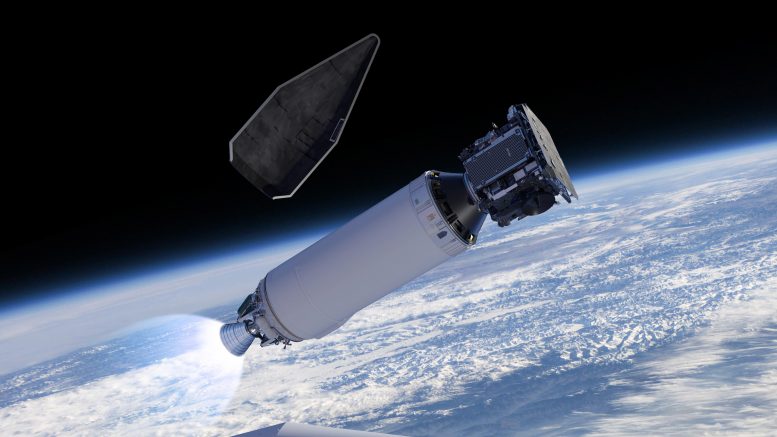
Artist’s impression of the fairing encapsulating Solar Orbiter being released following launch on an Atlas V 411. Credit: ESA/ATG medialab
From its unique elliptical orbit, the satellite will view some of the never-before-seen regions of the Sun, including the poles, and shed new light on some of the little-understood aspects of the star’s activity, such as the formation of the solar wind. The mission will also provide data about the Sun’s magnetic field and how it arises.
Knowledge of our nearest star is key to unraveling how stars work in the Universe, but understanding solar activity is also critical for the infrastructure on and around Earth. Powerful ejections of solar plasma can cause geomagnetic storms that disrupt electrical and telecommunication networks on the ground as well as the operations of satellites orbiting our planet.
ESA’s Solar Orbiter satellite in a cleanroom at the Astrotech payload processing facility near Kennedy Space Center, Florida. The spacecraft is seen being mounted onto the payload adaptor ring and encapsulated into a fairing, which will protect the satellite and the rocket upper stage during the turbulent ascent through Earth’s atmosphere. Credit: ESA/Airbus/Astrotech/ULA/NASA
Solar Orbiter will get as close as 42 million km to the Sun, about a quarter of the distance between the Sun and Earth. The spacecraft and its components, including its 18-m solar array (as measured from tip to tip), were designed to survive in the scorching temperatures of up to 500°C and withstand constant bombardment by highly charged particles of the solar wind for at least seven years.
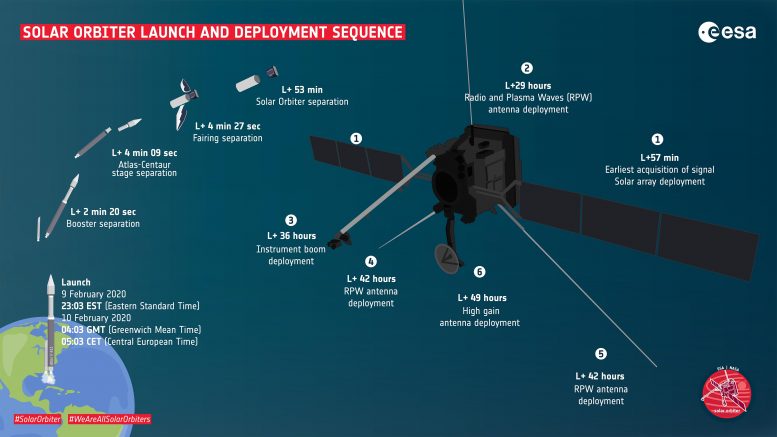
The spacecraft will separate from the launcher around 53 minutes after launch, followed by acquisition of spacecraft signal. In the days after launch, the instrument boom and antennas will be deployed. Credit: ESA–S.Poletti
Solar Orbiter will separate from the rocket about 53 minutes after launch and is expected to send its first signal to the ground shortly thereafter. The signal acquisition will be announced from the European Space Operations Centre (ESOC), in Darmstadt, Germany, which will operate the entire mission.
ESA TV Program Live From Cape Canaveral
Watch live via ESA Web TV 03:30 – 07:00 GMT (22:30 – 02:00 EST)
Key moments:
03:30 GMT (04:30 CET) – Broadcast starts
04:03 GMT (05:03 CET) – Liftoff
04:55 GMT (05:55 CET) – Solar Orbiter spacecraft separation
04:59 GMT (05:59 CET) – Earliest signal acquisition opportunity
05:19 GMT (06:19 CET) – Expected solar array deployment
05:20 GMT (06:20 CET) – Official speeches
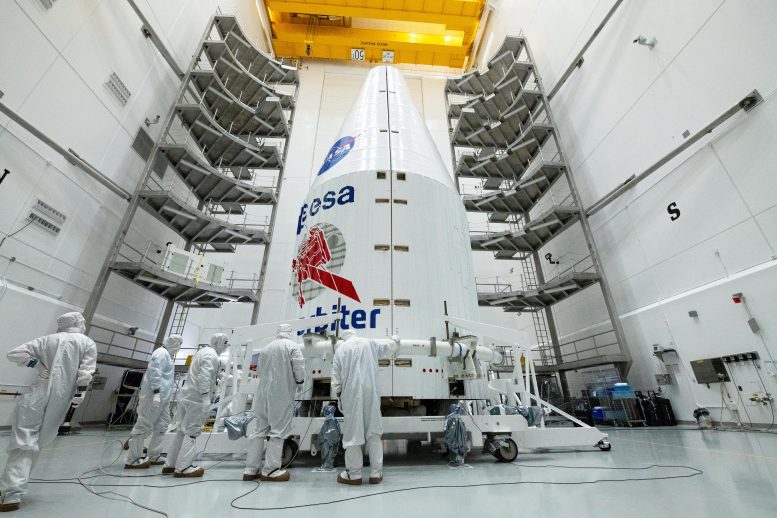
The fairing of the US Atlas V 411 rocket with ESA’s Solar Orbiter spacecraft inside at the Astrotech payload processing facility near Kennedy Space Center in Florida during launch preparations on January 21, 2020. Credit:
ESA–S. Corvaja
Solar Orbiter is an ESA-led mission with strong NASA participation. The spacecraft will study the Sun, its outer atmosphere and what drives the dynamic outflow of solar wind that affects Earth. The spacecraft will observe the Sun’s atmosphere up close with high spatial resolution telescopes and compare these observations with measurements taken in the environment directly surrounding the spacecraft – together creating a detailed picture of how the Sun affects the space environment around Earth and further out in the Solar System. Thanks to its unique and difficult to achieve orbit, Solar Orbiter will also provide the first pictures of the Sun’s polar regions, offering key insights into the poorly understood magnetic environment there, which helps drive the Sun’s 11-year solar cycle and its periodic outpouring of solar storms. Solar Orbiter relies on a combination of 10 instruments, built throughout Europe and in the United States, carefully chosen and designed to support and amplify each other’s observations, together providing the single most comprehensive and integrated view of the Sun and its environment ever achieved.

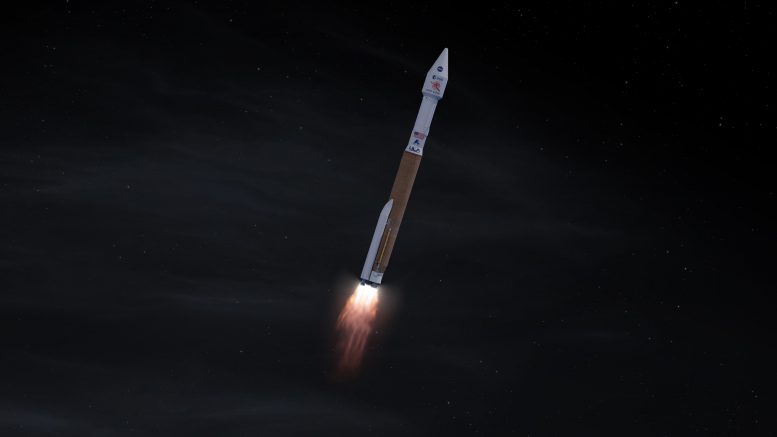


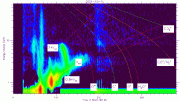



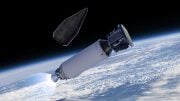

I would also like see a comparison of Solar Orbiter and Parker S/C of NASA, in terms of their aims and mission characteristics. Will they complement each other? In what respects?